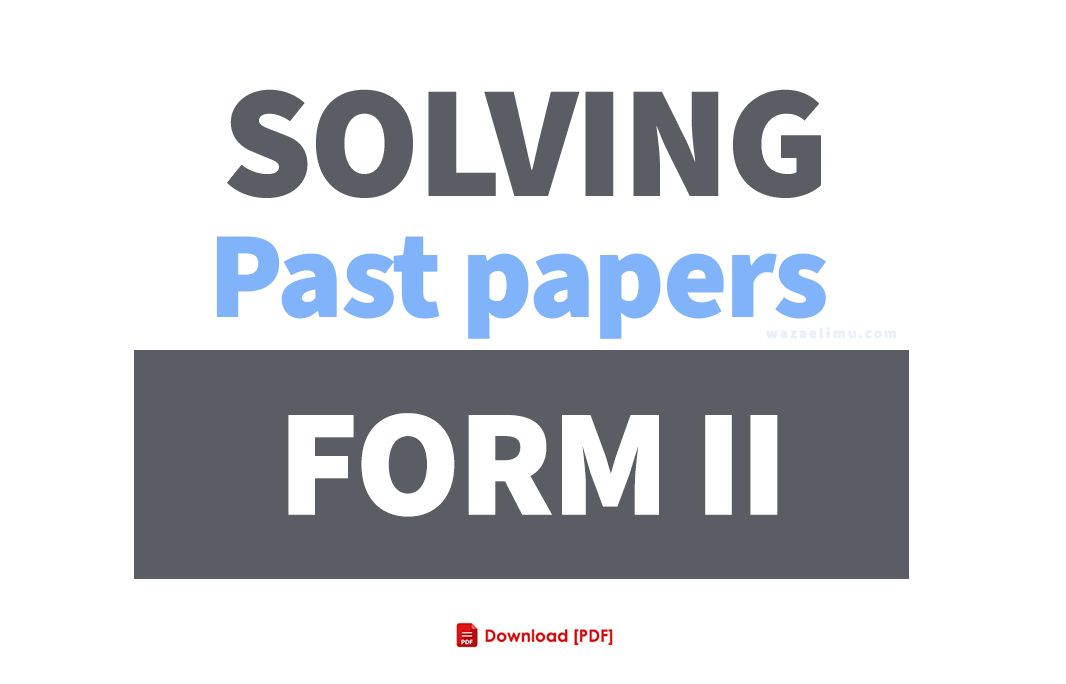
Welcome to Wazaajira.com, are you looking for Mock Exams Form Two 2025 – All Regions with Answers (mock, pre-necta, joint exams)? Download past Papers in Wazaajira.com for free in PDF format. Mock past papers are essential for preparation for final assessment Conducted by National Examination Council of Tanzania (NECTA).
Evidence of the earth’s rotation
(i) The phenomenon that the sun moves from the east to the west is absolutely not true because the sun as the central body of solar system is stationary. Instead, what moves is the earth, which rotates from the west to the east. It is this movement which explains why the sun appears to rise from the east in the morning and set in the west during the evening.
Therefore, the earth rotates on its axis from the west to the east.
(ii) At night, most of the stars appear to move across the sky from the east to the west. This proves that the earth is rotating from the west to the east.
(iii) When travelling in a fast-moving vehicle, we notice that trees and other objects appear to be moving in the opposite direction.
This observation is similar to the movement of the earth in relation to the sun. Just like the individual moving in the bus, it is the earth and not the sun that rotates.
The earth’s rotation changes from no movement to very rapid movement although we do not feel the motion because we move with it. At the equator, every point of the earth’s surface moves eastwards at about 1,600 kilometres per hour. At latitude 40°, the speed is about 1,280 kilometres per hour.
In the meantime, at the poles, the speed is 0 kilometre per hour.
Effects of the earth’s rotation
When the earth rotates, the following happen:
(i) Day and night
The change between day and night is caused by the rotation of the earth on its axis. The side that faces the sun experiences the light from the sun (day) whereas the side that is not facing the sun at that time is in darkness (night).
Therefore, as the earth rotates, its two parts alternate between light and darkness, respectively, hence the day and night sessions they experience in turns. As such, different places on the earth’s surface experience sunrise, noon and sunset at different times in a day.
(ii) Differences in time between places located at different longitudes
The earth’s rotation results in different times for different locations.
The difference in time is determined by longitudinal differences between two or more places. We have learned that the earth rotates from the west to the east making a circle of 360e.
Then, how long will it take to turn 1°?
To find the answer to this question, we must divide 24 hours by 360e.
But first, we will change the hours into minutes: 24 x 60= 1440. Thus, the earth goes through 360° in 1,440 minutes. To find how long it takes 1° to rotate, we divide 1,440 minutes by 360°.
Therefore, the earth takes 4 minutes to turn 1°. As there are 60 minutes in 1hour, the earth will turn 15° in 1 hour.
(iii) Gain or loss of a day when crossing the International Date Line
The International Date line (IDL) is an imaginary line that was established in 1884. This line follows the meridian of 180′ longitude except where it crosses land surface. It is located halfway round the world from the prime meridian (the zero degree longitude) established in Greenwich, England, in 1852.
When travelling from the west to the east and you cross the IDL, you gain a day. Conversely, when you cross this line from the east to the west you lose a day (see Figure 2.31 in page 36).
For example, if it is Thursday 3″l August 2:00 pm at 165° W, it will be Friday 4th August 2:00 am at 165°E.
(iv) Deflection of winds and ocean currents
The earth’s rotation causes deflection of planetary winds and ocean currents. This means that they do not blow and flow in the intended direction. The planetary winds and ocean currents are deflected to the right in the northern hemisphere and to the left in the southern hemisphere.
MOSHI DISTRICT COUNCIL FORM TWO PRE-NATIONAL ASSESSIMENT 2024
INFORMATION AND COMPUTER STUDIES
